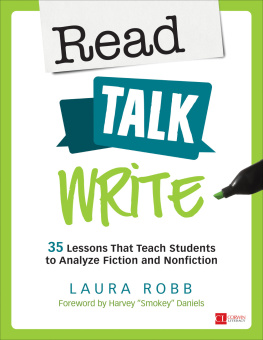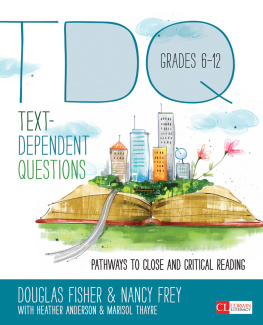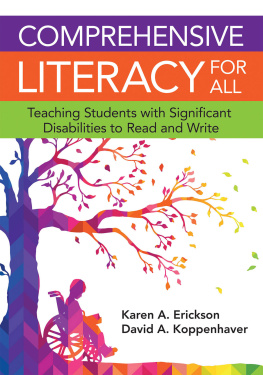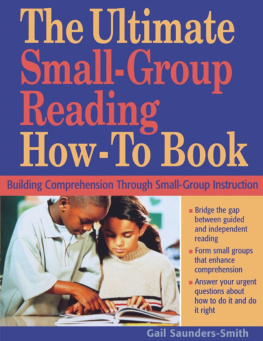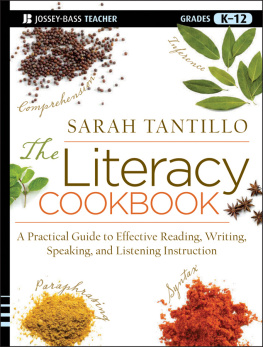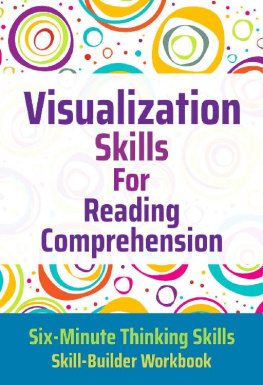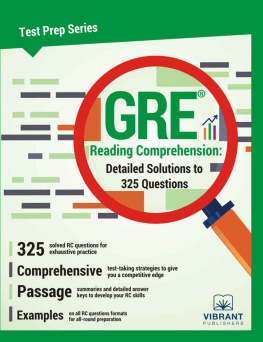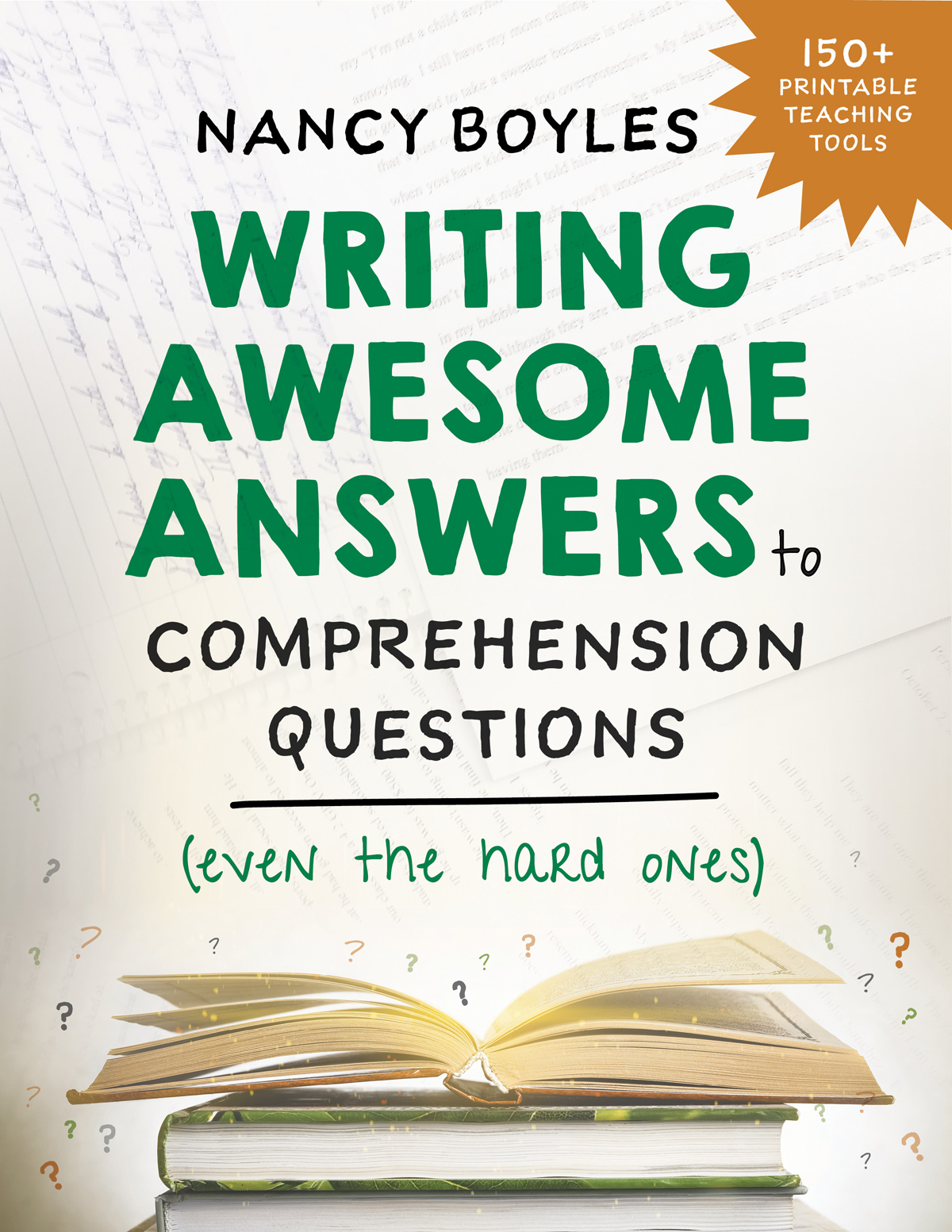CONTENTS
Guide
Page List
ADVANCE PRAISE
Yes!!! A resource for teachers that actually defines the standards, builds knowledge, and provides scaffolds and supports for both teachers and students! This easy-to-read book contains over 100 materials ready for immediate implementation. Explanations and models (with annotations) tied to authentic literature are provided. Its the perfect addition to any CCSS-aligned curriculum or program. Teaching constructed response has never been easier!
Dena Mortensen, Supervisor of Elementary Reading and Language Arts, Waterbury Public Schools, CT
Nancy Boyless book is appropriately titled: its an awesome guide to teaching students how to read closely and construct an answer to every type of comprehension question. The skills students develop with Boyless methods will serve them well on standardized tests and beyond, as they will read and write more carefully and think more clearly. A blessing for busy teachers, Boyless book offers detailed lesson plans and abundant sample questions on prose and poetry selections.
Geraldine Woods, teacher and author of 25 Great Sentences and How They Got That Way and Sentence. A Period-to-Period Guide to Building Better Readers and Writers
Nancy Boyless newest book holds the secret formula teachers have been looking for to strategically teach the components of a well-written constructed response. Writing Awesome Answers to Comprehension Questions takes the process and breaks it down into clear, easy-to-follow steps. The text is loaded with instructional strategies and resources for immediate use, including Anchor Charts, Checklists, and Answer Frames.
Michelle Dupuis, Academic Coach, Natchaug School, Willimantic, CT
At construction sites, they put windows in the walls so you can see inside the building site. Nancy Boyles gives you such a window into how students can build meaningful constructed responses. More importantly, she delivers thoughtful, practical tools teachers can use to help students read carefully and respond accurately. These tools include anchor charts, cue cards, and ways to have students engage with various media types. As usual, a cant-miss text.
Dr. Michael J. Rafferty, Director of Teaching and Learning, Derby Public Schools, Derby, CT, and author of 30 Big Ideas Lessons in Small Groups
The wait is over. Writing Awesome Answers to Comprehension Questions is absolutely brilliant. Nancy Boyles has bestowed a toolbox upon teachers, with which to get students writing about reading. Teachers will discover numerous mini lessons, instructional strategies, texts aligned to questions, anchor charts, rubrics, checklists, and more. This systematic approach to analytical reading instruction is a complete guide to supporting students of all reading levels to read for meaning and answer questions deeply.
Christina OBrien, Assistant Principal/Special Education Supervisor, Naubuc Elementary School, Glastonbury, CT
WRITING
AWESOME
ANSWERS to
COMPREHENSION
QUESTIONS

(even the hard ones)
NANCY BOYLES

Norton Books in Education
With thanks to Josh and Andrea, who have stolen my heart, and whose hard work with early reading has demonstrated to me one more time that a solid foundation in word skills is a necessary prerequisite for one day writing awesome answers to comprehension questions. And with thanks as well to these same special friends for reminding me of the importance of children seeing themselves as readers. Their trust in us, their teachers, to empower them as literacy learners is immeasurable. May we never betray that trust.
Nancy Boyles
January 2021

CONTENTS
The world of writing is a wide one. This book explores only a narrow piece of that world: analytical writing that requires short answersspecifically answers to standards-based comprehension questions. We call these constructed responses because students are tasked with constructing the answers themselves, as opposed to choosing from a list of options.
There are many issues to address around constructed response to maximize the power of teachers instruction and the potential of students learning. In turn those practices into ready-to-use tools designed to lead students to success as analytical readers and writers.
But before delving into the strategies that are effective for teaching constructed response, lets take a moment to trace the history and meaning of the term itself.
What IS Constructed Response? A Trip Down Terminology Lane
The term constructed response gained popularity with the arrival of the Common Core, separating questions of this type from selected responsealso a relative newcomer to the language of literacy instruction and assessment. For selected response, think multiple choice. Following the question are several possible answers, typically A, B, C, D. In the past, students would select just one of those options, though now students may be instructed to choose any number of options, or all that apply.
Constructed response questions are different in that students must construct or write the answer themselves. In the past, a more commonly used term was open-ended question because students could respond in more than one way and still be correctas long as they could justify their response with textual evidence. These were sometimes called short answer questions because the intended length was shorter than a full essay, although technically, a constructed response could be any length.
What we used to regard as the essay, in particular the infamous Five Paragraph Essay, has been repackaged as a performance-based task (in some cases, simply called a performance task). Or it might be labeled an extended response. There is no longer a prescribed number of paragraphs. Ive also heard the term long-writes for any lengthy writing task, and short-writes for shorter pieces.
One of the key distinctions between writing genres was that students wrote stories (narrative writing), or they wrote reports, essays, research papers, and the like, which were considered analytical writing. But even these lines have become blurred. On some state testing sites Ive noted references to narrative essays, which on closer examination are tasks where students are asked to write stories. Are you confused yet? Think how confusing all of this must be to students.
For the purposes of this book, lets use this working definition for constructed response:
Constructed Responses are analytical writing tasks, typically shorter than a full-length essay, where students respond to comprehension questions related to one or more literary or informational texts.
Whats in This Book (and Whats Not), and How It Will Help You and Your Students
Like so many difficulties that students face in school, the problem we see on the surface may represent the symptom more than the underlying cause. This is often true with constructed responsethe real issue may be more about reading than writing. Sometimes the reading problem relates to decoding. We have some students who cant answer comprehension questions because they cant figure out the words in what they readeither the text or the question about the text. You will not find the solution to that issue (lack of foundational reading skills) in this book, although it certainly needs to be resolved. However, we also have many students who



